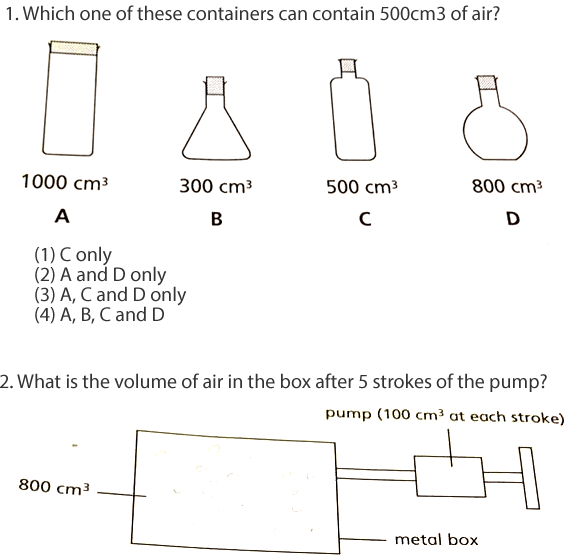Questions like these come up quite often in the exams. The answer for question 1 is (4) and the answer for question 2 is 800cm3.
A parent asked me if I spotted the contradiction between the two questions. If, in the second question, the volume of air regardless of how much air has been pumped in is 800cm3, why isn’t the volume of air in the 300cm3 container in question 1 not 300cm3 as well?
The questions and the paragraph above contains so many simplistic generalisations and inaccuracies it’s difficult to explain using just the term “volume of air” and “volume of container”. In secondary school onwards, we learn about the pressure of a gas, and that the volume of gas, by itself, makes no sense unless we also specify the pressure (eg. 500cm3 of air at atmospheric pressure). Quantities of gases can also be measured in other ways, like mass or number of molecules (moles). But for primary school, it’s deemed too complicated so we can only use volume. This causes some confusion.
When the questions asks “what is the volume of air”, just remember it’s asking “what is the volume of the container”.
In that way, the first question becomes “which one of these containers can contain some air”. Ans: all of the above.
The second question becomes “what is the volume of the container…” and the answer is simply 800 cm3
Hope it helps!

